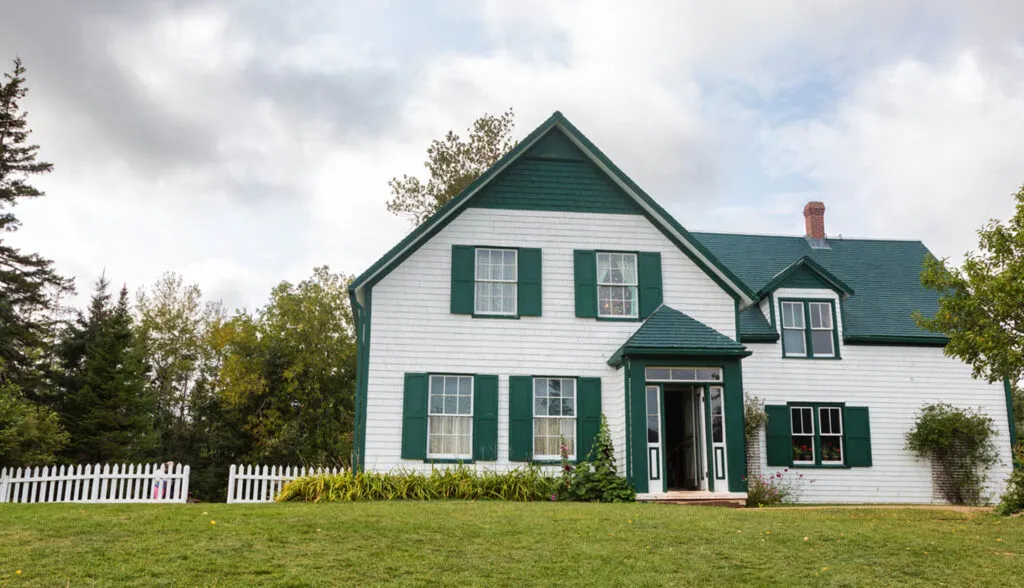I’d been scoping out a new office in the medical center where I worked as a nurse; a change of scenery for the despair I couldn’t shake.
Suddenly, a lady with shoulder-length red hair bounded down my hallway rattling a metal cart piled high with supplies she balanced with her chin. Hospital staff I’d never known existed poured out of closed doors. “Rita!” they hollered. “You moving to the hood?” I watched, transfixed, as lilting laughter flowed till she landed in the office smack dab next door to me.
My life changed in a moment. I cancelled my move and surrendered to her magic. Her mama might have named her Rita, but that was clearly a misnomer. For here, standing right in front of me, was Anne of Green Gables—the beloved fictional orphan first introduced to the world in the 1908 novel by Lucy Laud Montgomery. Sure, she didn’t have braids, but she displayed the same impish enthusiasm; spoke in the same over-the-top soundbites. Even better, I soon learned that Rita, just like me, had been captivated by Anne’s antics since childhood. I dubbed her Anne; she was delighted.
There were more synchronicities to come. We soon learned we were both born in 1953, me in September, ‘Anne’ in October. It was to be her first of a sundry of famous Anne proclamations: “I’m so glad I live in a world where there are Octobers!” she announced. If those words had fallen from the lips of anyone else, they would’ve annoyed me. “Or September, Roberta!” she added, her voice a full octave higher. “Or April or June. Or any other month of the year.”
It’s hard to fool somebody as intuitive as Anne. When she dashed in with a cup of chai tea, she found me holding an ice pack to the side of my face. I tried to hide my medical issues, but it was too late. By then she’d seen the bulging tumors, the trash can where I’d succumbed to nausea. “I’m in the depths of despair,” I wailed, trying to lighten things by adding an Anne quote of my own. “My life is a perfect graveyard of buried hopes.”
Anne was not deterred. One day after teaching a class, I confided how I’d left my office with the wrong lecture notes and totally bombed. “Oh, that was today, Roberta,” she cooed. “Isn’t it nice to think tomorrow is a new day with no mistakes in it yet?”
The day came when I experienced a dreadful fall. Struck my face. More tumors appeared inside my head. I retired from my job at the hospital and underwent seven surgeries in one year. The fiery pain was so intense my doctors upped my medication. Before I knew it, I was addicted to prescription opioids.
Anne sent encouraging cards and emails, left voicemail messages brimming with hope. The surgeries corrected my tumor issue but a new problem arrived in their place. Oppressive medical debt had me barely scraping by.
About that time I stopped opening the cards that arrived in my mailbox, reading emails, or listening to phone messages. It would always be someone worried about me, wanting to help. The offers were as unique as the friends who offered. Can I cut your grass? Bake you a mandarin orange cake? Give you a manicure? After a while folks let me be. Not Anne. I’d find envelopes dotted with charming stickers slipped under the front door, the windshield wipers of my car, Post-it notes on my windows. One morning after returning from the doctor, I left an Anne-ism for her. No! No! No! I can’t cheer up. I don’t want to cheer up. It’s nicer to be miserable.
She persevered. When Valentine’s Day rolled around she filled a tray with beautifully-packaged herbal teas, a sweet mug, chocolates wrapped in gold, a vintage heart hankie, a rosebud in a slender silver vase. I discovered it by my door with a note straight from Green Gables: “One can dream so much better in a room where there are pretty things.” But tucked inside the mug were words spoken not by the fictional Anne, but from the heart of Anne’s 21st century kindred spirit. “I don’t know what’s wrong, but it is a teensy part of who you are. Trouble troubles every one of us. If you don’t let us know, the people who love you can’t love you enough.”
I re-read her words so many times that the folds in the paper split in two. Through an absolute miracle, time and God turned the page. I awakened each morning to a day without tumor pain nor the need for medication. I turned my sights toward fixing up my cabin; I started by plundering through my garage for abandoned objects.
It was then I noticed something covered with a bedsheet, a three-dimensional wooden painting an antiques dealer had found in a shuttered historic New York City restaurant. “It has your name on it, Roberta,” he’d told me. I’d studied the two girls on the seesaw, trying to figure how I fit into the picture. I sure wasn’t the pigtailed redhead filled with joy. So I must’ve been the one with a scowl on her face; the one convinced her best days were over.
A note taped to the back said, “Inspired by Prince Edward Island.” I had never noticed that before. I smiled at the painting, seeing it—and life— as for the first time. Anne and Roberta, balancing each other, in good times and bad, on that seesaw called friendship.
It did not surprise me when, years later, the Canadian TV series Anne with an E became an instant cult classic. After all—we could all use an Anne in our lives. How blessed am I to have had my very own. You were always right, my beloved Anne: Dear old world, you are very lovely, and I am oh so glad to be alive in you!





